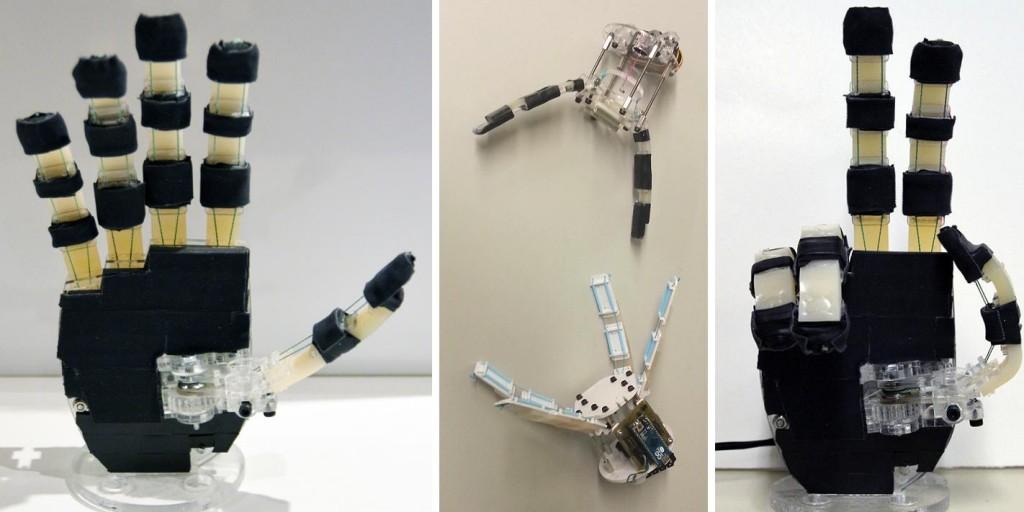Over the past few months we have covered a company based in the United Kingdom, called OpenBionics, but there is also another organization that goes by the same name (different website) and actually does similar work. Both of these groups specialize in creating 3D printed robotic/prosthetic arms.
Today’s story is about an initiative run by five men, Minas Liarokapis, Agisilaos Zisimatos, Christoforos Mavrogiannis, George Kontoudis, and Kostas Kyriakopoulos, as part of OpenBionics.org. Late last week they contacted 3DPrint.com with an update, one which stands to change the landscape within the prostheses industry, if successful. The group just launched their project into the Hackaday Prize Competition, and also released more details to the public.
“A novel differential mechanism, based on the whiffletree, allows the user to block the motion of each finger independently and facilitates the execution of 144 different grasps with only 1 actuator,” the company told 3DPrint.com. “The design is based on parametric models of hand anthropometry studies so it can easily be personalized to specific patients.”
This mechanism allows users to block the motion of any finger using a simple button. This allows for 16 different index, middle, ring and pinky finger combinations, using the single motor on the hand. These can then be combined with 9 different positions that the thumb can be set in. If you multiply these two numbers together (9X16), you will see where the 144 different grasping postures come from. It really is quite the incredible innovation.
“Τhe use of parametric models derived from human hand anthropometry studies, allows for the development of personalized prosthesis,” they explain. “The only parameters that we need in order to derive the finger phalanges lengths and the personalized finger base frames positions and orientations, are the human hand length (HL) and the human hand breadth (HB).”
For those interested in seeing the design files for this hand, you can download them for free at the OpenBionics website. OpenBionics asks that anyone interested in having a design created of this hand, for themselves, contact them via their website, and provide them with the desired specifications such as hand length and breadth. What do you think about this incredibly innovation on behalf of OpenBionics? Will this revolutionize the prosthetic hand space? Discuss in the OpenBionics forum thread on 3DPB.com. Be sure to check out some of the videos and photos below.
